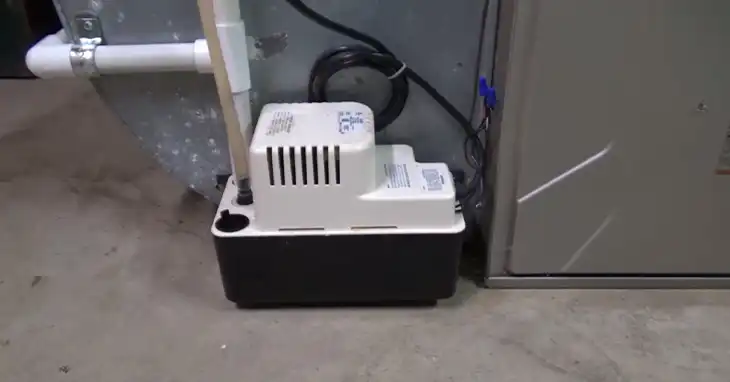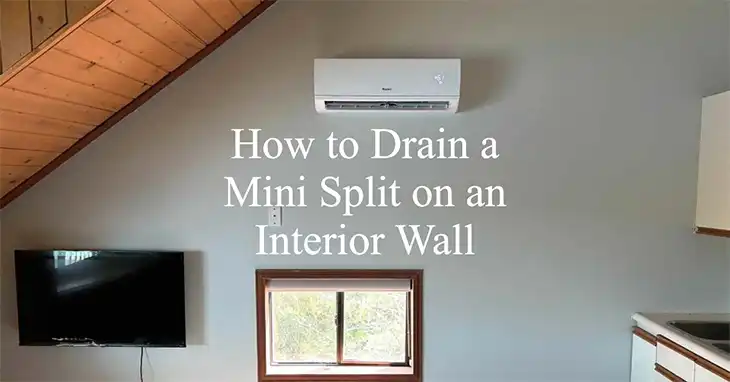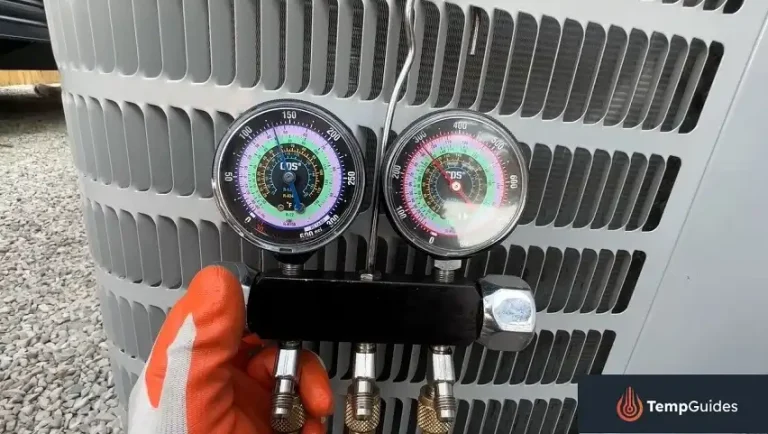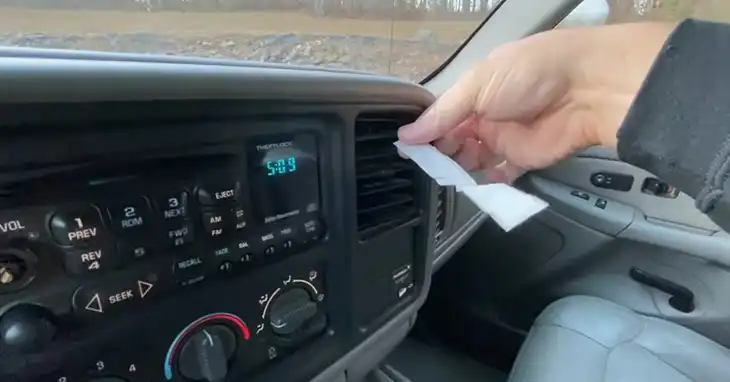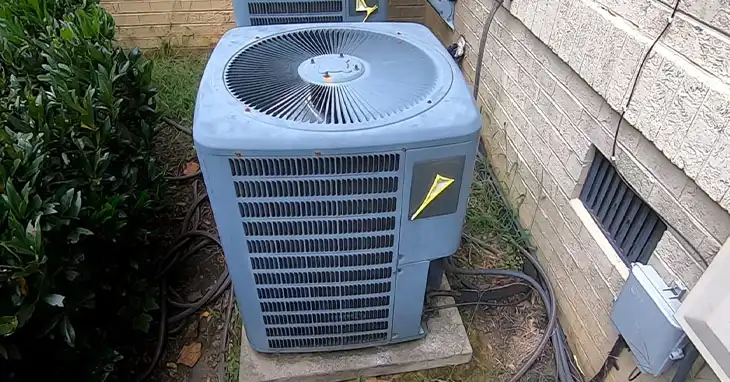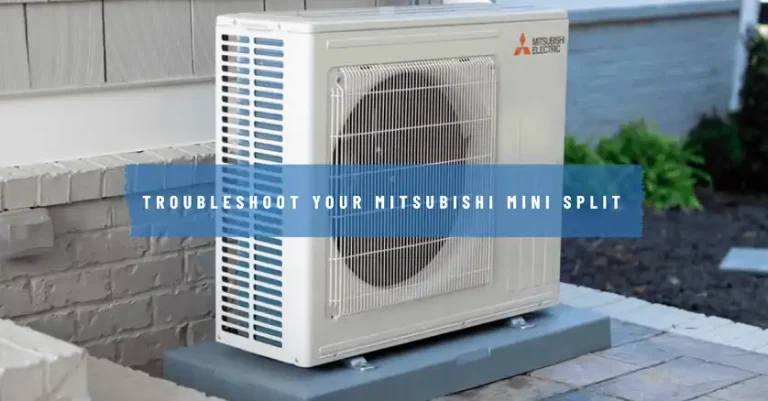AC Suction Line Not Cold | Explained
Man, there’s nothing worse than walking into a hot house on a scorching summer day because your AC’s not cooling right. That warm suction line is usually the first bad sign.
The short answer? Something’s up with your system, whether it’s low refrigerant, compressor issues, airflow blockages, or other problems. That copper line should feel frosty when the AC’s working properly.
Don’t sweat it, though. I’ll break down the most common reasons for a warm suction line and what you can do about it. We’ll cover easy DIY fixes and when to call in the pros. Just follow along, and we’ll get that cool air flowing again in no time.
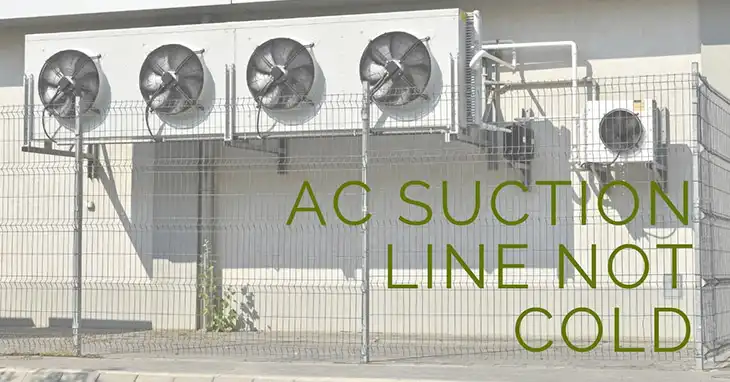
Why AC Copper Pipe (Suction Line) isn’t Cold?
As an HVAC pro, let me break down some common reasons your suction line (that copper pipe) might be feeling more like a heater than an AC unit.
Low Refrigerant Level
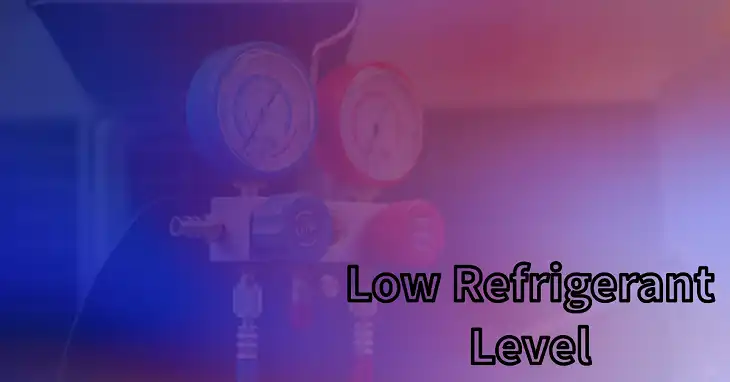
One of the top culprits is low refrigerant levels. Refrigerant is the lifeblood keeping your system pumping cool air. When levels are low, that evaporator coil struggles to absorb heat properly, leaving the suction line warm instead of icy.
Refrigerant leaks are a common cause of low levels, allowing the chemical to slowly escape from the system over time. Even the smallest leak can lead to a significant drop in refrigerant levels, compromising the performance of your AC unit. Other factors, such as improper charging during installation or maintenance, can also contribute to low refrigerant levels.
Compressor Issues
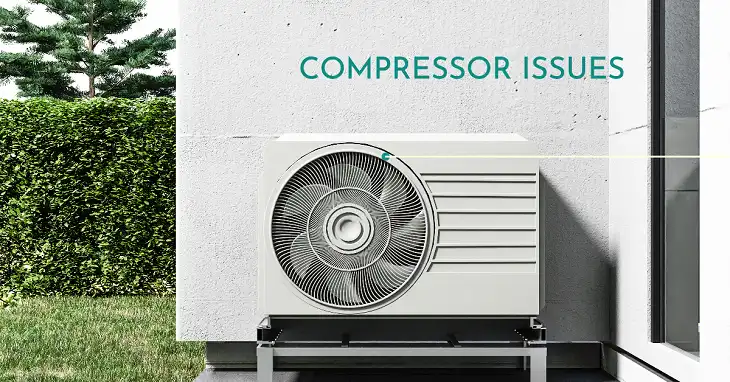
The compressor is the heartbeat of your air conditioning system, responsible for circulating the refrigerant through the various components. If the compressor is malfunctioning or not operating correctly, it can directly impact the temperature of the suction line.
Compressor issues can stem from a variety of causes, including electrical problems, overheating due to inadequate airflow or refrigerant levels, or simply wear and tear over time. A failing compressor may struggle to circulate the refrigerant effectively, leading to a warm suction line and reduced cooling capacity.
Airflow Restrictions
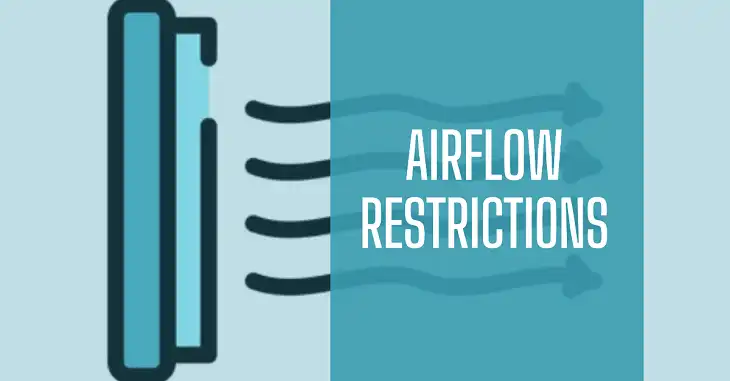
Proper airflow is crucial for your air conditioning system to function efficiently. When there are obstructions or restrictions in the airflow, it can prevent the evaporator coil from effectively absorbing heat from the air inside your home, leading to a warm suction line and decreased cooling performance.
Common causes of airflow restrictions include dirty or clogged air filters, blocked air vents or registers, and issues with the ductwork system, such as leaks, kinks, or excessive buildup of dust and debris. These obstructions force the AC unit to work harder, straining the system and potentially causing the suction line to remain warm.
Expansion Device Troubles
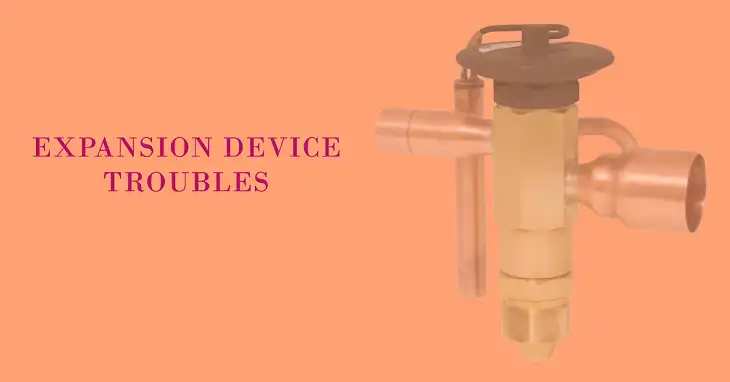
The expansion device, also known as the metering device, plays a vital role in regulating the flow of refrigerant into the evaporator coil. This component controls the amount of refrigerant entering the coil, ensuring that the refrigerant is in a liquid state and allowing it to absorb heat effectively.
If the expansion device is malfunctioning or clogged, it can disrupt the flow of refrigerant, preventing the evaporator coil from absorbing heat properly. This can result in a warm suction line and reduced cooling efficiency, as the refrigerant may not be able to absorb enough heat before returning to the compressor.
Common expansion device issues include blockages caused by debris or contaminants in the refrigerant, or simply wear and tear over time, requiring replacement.
Inadequate Insulation: Preventing Heat Transfer
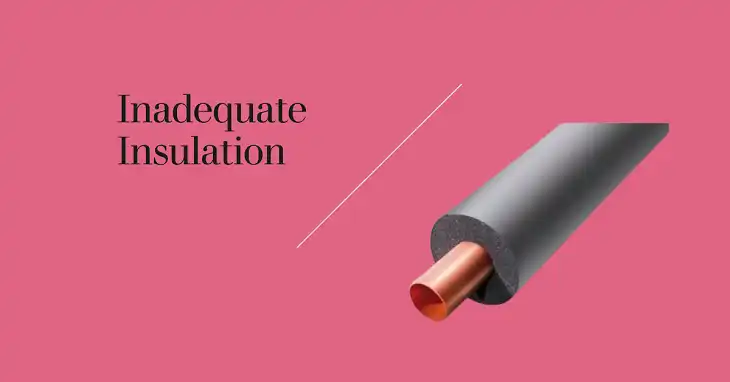
The suction line is designed to carry cool, low-pressure refrigerant back to the compressor after it has absorbed heat from the indoor air. To maintain its cool temperature, the suction line is typically insulated to prevent heat transfer from the surrounding environment.
If the insulation around the suction line is damaged, missing, or inadequate, it can allow heat from the outside to transfer into the line, causing it to feel warm or hot to the touch. This not only reduces the efficiency of your AC system but can also lead to condensation forming on the line, potentially causing water damage or encouraging mold growth.
Ensuring proper insulation around the suction line is crucial for maintaining the desired temperature and preventing heat transfer, allowing the refrigerant to remain cool as it travels back to the compressor.
Bad Capacitor/ Hard Start Kit
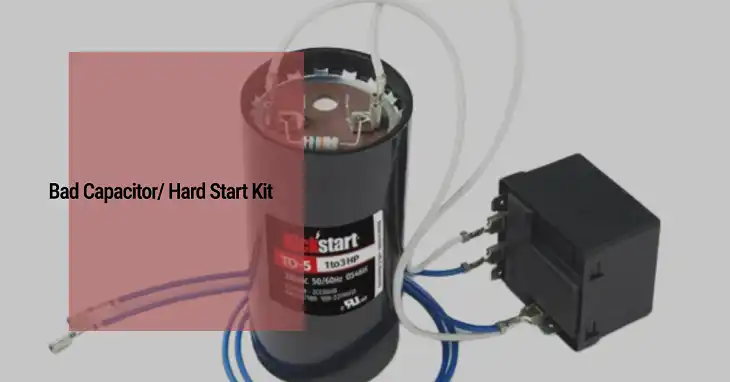
The capacitor/hard start kit are essential electrical components that play a vital role in the operation of your air conditioning system’s compressor. The capacitor provides the initial burst of energy needed to start the compressor, while the hard start kit helps the compressor overcome the initial resistance and ensures a smooth start-up.
If either of these components is faulty or failing, it can prevent the compressor from starting or running correctly, leading to a warm suction line and reduced cooling capacity. A bad capacitor may cause the compressor to struggle to start or run intermittently, while a faulty hard start kit can make it difficult for the compressor to overcome the initial resistance, causing it to strain and potentially overheat.
DIY Troubleshooting Steps for a Warm AC Suction Line
While some issues related to a warm suction line may require the expertise of a professional HVAC technician, there are several DIY troubleshooting steps you can take to identify and potentially resolve the problem.
Check the Air Filter
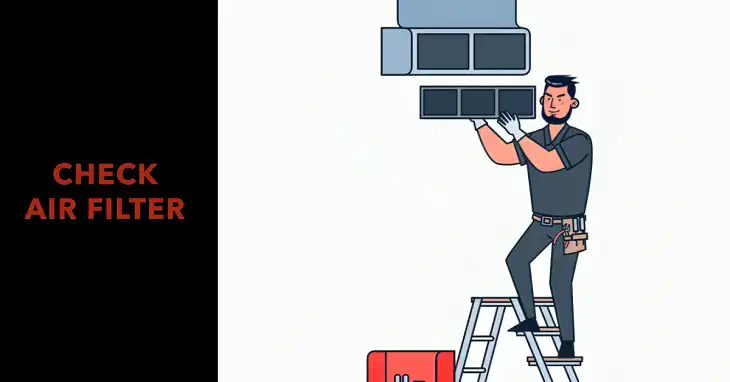
One of the simplest and most effective DIY troubleshooting steps is to check and replace your air filter if necessary. A clogged or dirty air filter can significantly restrict airflow, causing the evaporator coil to freeze up and the suction line to remain warm.
To check the air filter, locate the filter compartment (typically in the return air duct or near the indoor unit) and visually inspect the filter. If it appears dirty, clogged with debris, or has reached the recommended replacement timeline, it’s time to install a new filter.
Inspecting the Outdoor Unit: Listening for Unusual Noises
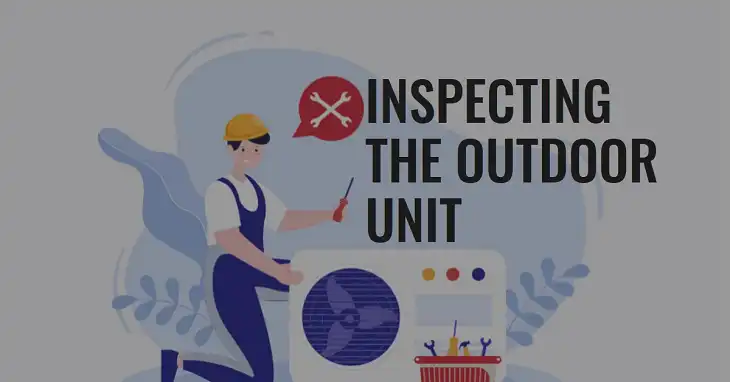
If you suspect a compressor issue, it’s essential to inspect the outdoor unit for any unusual noises or vibrations. Strange sounds, such as grinding, squealing, or rattling, can indicate a problem with the compressor or other components, which could cause the suction line to stay warm.
When inspecting the outdoor unit, first ensure that the unit is turned off for safety. Then, carefully listen for any abnormal noises coming from the compressor or fan motor. If you notice any concerning sounds, it’s best to call a professional HVAC technician for further diagnosis and repair.
Additionally, check for any visible signs of damage or wear on the outdoor unit, such as dents, rust, or debris buildup, which could also contribute to compressor issues and a warm suction line.
Examining the Ductwork and Vents: Clearing Obstructions
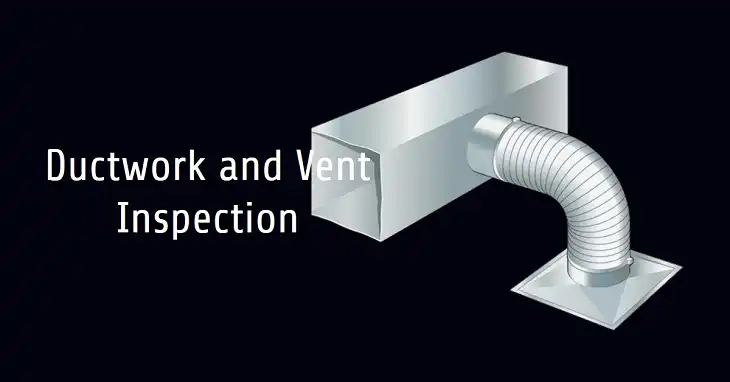
Obstructions in the ductwork or air vents can significantly restrict airflow and prevent the evaporator coil from absorbing heat effectively, leading to a warm suction line. To address this issue, you’ll need to examine the ductwork and vents for any blockages or debris.
Start by visually inspecting the air vents and registers throughout your home for any visible obstructions, such as furniture, curtains, or accumulated dust and debris. Clear any obstructions you find to ensure proper airflow.
Next, if possible, inspect the ductwork itself for any signs of blockages or buildup. You may need to remove duct covers or access panels to get a better view. If you notice any significant obstructions or debris buildup, consider hiring a professional duct cleaning service to thoroughly clean and clear the ductwork.
Assessing the Insulation: Ensuring Proper Heat Retention
To ensure that your suction line is properly insulated and prevents heat transfer, you’ll need to inspect the insulation around the line. Look for any signs of damage, gaps, or missing insulation sections.
If you find areas where the insulation is compromised, you may need to replace or repair it to ensure proper heat retention. Insulation materials designed specifically for HVAC systems, such as foam pipe insulation or insulation wrap, can be purchased at most hardware or home improvement stores.
When installing new insulation, be sure to follow the manufacturer’s instructions and ensure a proper fit around the suction line to prevent any gaps or air pockets that could allow heat transfer.
When to Call an HVAC Professional for a Warm AC Suction Line
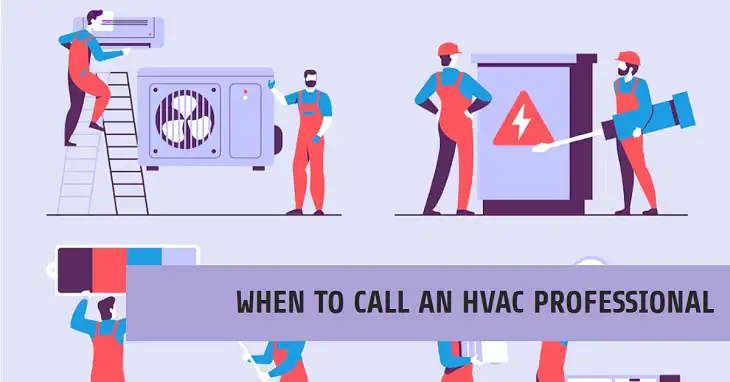
While DIY troubleshooting steps can help identify and potentially resolve some issues related to a warm suction line, there are situations where it’s best to call in a professional HVAC technician for proper diagnosis and repair.
Refrigerant Leak Detection and Repair
If you suspect a refrigerant leak, it’s crucial to have a professional handle the detection and repair process. Refrigerant leaks can be challenging to locate, as they can occur in various parts of the system, including the evaporator coil, condenser, or refrigerant lines.
Professional HVAC technicians are equipped with specialized tools and training to accurately detect and locate refrigerant leaks, ensuring that the issue is properly addressed. They can then repair the leak and recharge the system with the correct amount of refrigerant, restoring proper cooling performance and preventing further issues.
It’s important to note that refrigerant leaks can pose health and environmental risks if not handled properly, so it’s best to leave this task to trained professionals.
Compressor Replacement or Repair
If the compressor is the culprit behind your warm suction line, it’s generally recommended to have a professional HVAC technician handle the repair or replacement process. Compressor work can be complex and potentially dangerous if not done correctly.
Compressor repairs may involve tasks such as replacing faulty valves, gaskets, or other internal components, while a complete replacement may be necessary if the compressor is severely damaged or has reached the end of its lifespan.
Professional technicians have the specialized knowledge, tools, and equipment required to safely and effectively repair or replace the compressor, ensuring that the new or repaired component is properly installed and functioning correctly.
Attempting compressor repairs or replacements on your own can be risky and may lead to further damage or safety hazards if not done properly.
Expansion Device Diagnosis and Replacement
Issues with the expansion valve, or metering device, often require the expertise of an HVAC technician for proper diagnosis and replacement. These components are crucial for the efficient operation of your AC system, and improper installation or servicing can lead to further problems.
HVAC technicians have the necessary training and tools to accurately diagnose expansion device issues, such as clogs, blockages, or malfunctions. They can then properly replace the faulty component with a new, compatible expansion device, ensuring that it is correctly sized and installed for optimal performance.
Attempting to diagnose or replace the expansion device on your own can be challenging and may result in improper installation or selection of the wrong component, potentially causing further damage to your AC system.
Electrical System Troubleshooting and Repair
If the issue with your warm suction line is related to electrical components, such as the capacitor or hard start kit, it’s best to leave the troubleshooting and repair to a professional HVAC technician. Electrical work can be hazardous if not handled correctly, posing risks of electric shock or potential damage to the system.
Professional technicians have the necessary training and equipment to safely diagnose and repair electrical issues within your AC system. They can accurately test and identify faulty components, such as a bad capacitor or hard start kit, and replace them with the correct, compatible parts.
Attempting electrical repairs on your own can be extremely dangerous, especially if you’re unfamiliar with the proper safety protocols and procedures. Even a minor mistake can lead to serious consequences, such as electrical fires or personal injury.
Preventive Maintenance for Optimal AC Performance
While addressing a warm suction line is important, implementing preventive maintenance measures can help ensure optimal performance and longevity for your air conditioning system, reducing the likelihood of future issues.
Regular Air Filter Replacements
One of the simplest and most effective preventive maintenance tasks is to regularly replace your air filters. Dirty or clogged air filters can significantly reduce airflow, strain your AC system, and contribute to issues like a warm suction line.
Most manufacturers recommend changing the air filter every 1-3 months, depending on factors such as the type of filter, usage levels, and environmental conditions. By keeping your air filters clean and fresh, you’ll ensure proper airflow, improve indoor air quality, and help prevent potential problems that can lead to a warm suction line.
Annual HVAC System Tune-ups
Scheduling an annual tune-up with a professional HVAC technician is crucial for maintaining the efficiency and performance of your air conditioning system. During a tune-up, the technician will thoroughly inspect and clean various components, identify potential issues, and make necessary adjustments to ensure optimal operation.
Some of the tasks performed during a tune-up may include:
- Cleaning the evaporator and condenser coils
- Checking and adjusting refrigerant levels
- Inspecting and lubricating moving parts
- Testing electrical components (capacitors, hard start kits, etc.)
- Checking and cleaning the condensate drain
- Tightening electrical connections
- Calibrating thermostat settings
Regular tune-ups can help catch and address minor issues before they become major problems, potentially preventing a warm suction line or other performance-related issues from occurring.
Ductwork Inspections and Cleaning
Over time, ductwork can accumulate dust, dirt, and debris, which can restrict airflow and reduce the efficiency of your AC system. Regular ductwork inspections and cleanings can help maintain proper airflow and prevent issues like a warm suction line.
During a ductwork inspection, a professional technician will visually inspect the ductwork for any signs of damage, leaks, or obstructions. If necessary, they may recommend a thorough ductwork cleaning to remove any buildup of contaminants, improving indoor air quality and restoring proper airflow.
Ductwork cleanings typically involve using specialized equipment and techniques to dislodge and remove any accumulated debris, ensuring that air can flow freely throughout the system.
Insulation Checks and Upgrades
Ensuring that the insulation around your suction line and other AC components is in good condition is essential for preventing heat transfer and maintaining efficiency. Over time, insulation can become damaged, deteriorate, or simply become outdated and less effective.
During an HVAC maintenance visit, a professional technician can inspect the insulation around the suction line and other components, checking for any signs of damage, gaps, or missing sections. If the insulation is found to be inadequate or in poor condition, they may recommend upgrading or replacing it with newer, more efficient insulation materials.
Proper insulation helps maintain the desired temperature of the suction line and other components, preventing heat transfer and ensuring optimal performance of your AC system.
End Notes
Alright, so there you have it – my professional take on dealing with a warm AC suction line. The key is being able to spot the issue early and knowing whether it’s a DIY job or time to call in reinforcements. Don’t let it slide, though, or you’ll be left melting all summer.
Proper maintenance is also crucial for keeping your system running like a champ. Just take it step-by-step, and we’ll get that suction line back to an icy chill before you know it. Now, who’s ready to beat this heat?

